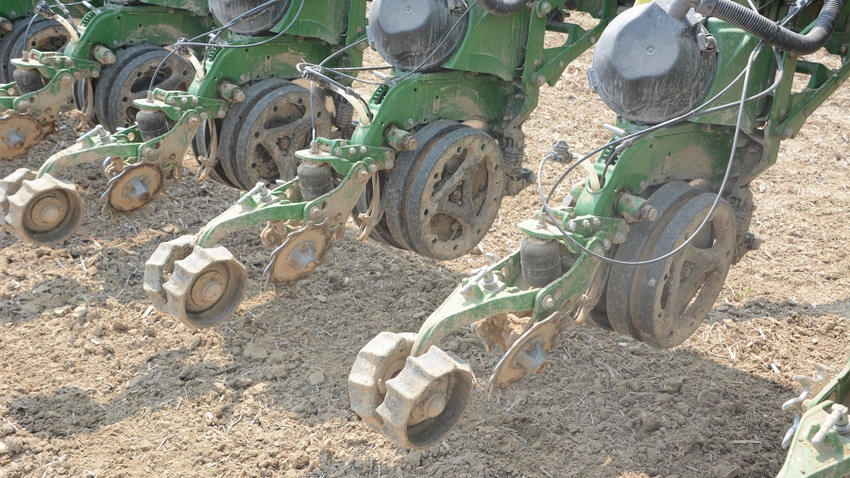
Greg Brawner’s planter is set up to perform several key functions and perform them well. It is plumbed with the FMC 3rive 3D system so the Brawners can apply Xyway LFR fungicide in a 2-by-2-inch band away from the seed, where they opt to use it. The planter is also equipped with Conceal fertilizer attachments from Precision Planting so they can place liquid fertilizer precisely.
Brawner’s son Gregory explains that their corn planter is also outfitted with FurrowForce, a two-stage row-closing system also offered by Precision Planting. The Brawners raise corn, soybeans and wheat in Jefferson County, Ind.
The two-stage row-closing system includes notch wheels that close the seed trench from the bottom up, followed by stitch wheels that firm the soil to keep moisture in. When needed, load cells monitored by the Precision Planting 20/20 monitor adjust weight applied on the stitch wheels to match ground conditions.
Which upgrades first?
There are a whole host of add-ons available for planters today. Where you start if you want to upgrade your current planter rather than trade for a new one depends partially on how it is equipped already. Andrew Drerup, a certified crop adviser in Ohio, says that when looking at planter upgrades, any option that offers increased productivity, better emergence or lower input costs is a great option for a relatively new planter with some current technology like electric drives.
“Not too many years ago, the only economical way to upgrade a planter was buy a new one,” he says. “Most major manufacturers like John Deere offer custom kits for your planter’s specific model year and original build options.
“My preference when upgrading a planter that already has electric drives is usually downforce upgrades first. Typically, electric-drive planters are designed for more planting speed variability. Adding a controlled and adjustable downforce system will allow it to operate with the efficiency it was designed to achieve.”
New downforce systems also give growers an advantage they never had before, Drerup adds. Very few fields have a consistent soil type and moisture level. Hills can be sandy and bottom ground can be wet. Installing a downforce system that can adjust to these conditions automatically ensures proper seed depth and avoids sidewall compaction.
Other planter options
If your planter already has advanced downforce control, Drerup recommends looking at a fertilizer control system. John Deere offers performance upgrade kits to install the ExactRate fertilizer system on late model planters. It enables variable-rate fertilizer control for liquid fertilizer applications. It also provides turn compensation, keeping the fertilizer rate constant on turns.
This system uses pulse width modulation nozzle control like on self-propelled sprayers to accurately control application rates and allows for individual row shutoff.
Ultimately, these systems help growers reduce their input costs at planting by reducing overlap in fertilizer application, Drerup concludes.
Read more about:
PlantersAbout the Author(s)
You May Also Like




